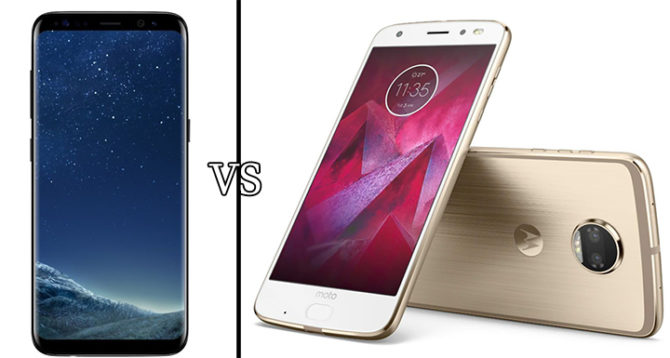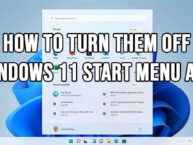Motorola has finally launched its much-awaited Moto Z2 Force handset. The new addition to the Moto Z range carries the modular smartphone concept along with the ShatterShield display and dual camera setup of ‘Force’ models. On the other hand, the Galaxy S8 offers the best Samsung has to offer. However, both devices are quite expensive and have clear advantages over each other. Also, both Moto and Samsung are quite popular among the Indian customers. Read more to find Moto Z2 Force Vs Samsung Galaxy S8: Which Phone Is Better?

Moto Z2 Force Vs Samsung Galaxy S8
The Moto Z2 Force is essentially an improved version of the Moto Z Force. While the Samsung Galaxy S8 features great design and superb hardware specs. Let’s take a closer look.
Price
| Samsung Galaxy S8 | Rs 57,900 |
| Moto Z2 Force | $799 (approx Rs 51,500 |
The Samsung Galaxy S8 is currently available at Rs 57,900 while the Moto Z2 Force is priced at $799 (approx Rs 51,500) in the US. The Moto Z2 Force has a slight advantage over the Galaxy S8 in this segment.
Also read: OnePlus 5 Vs Google Pixel XL Comparison: Which Phone is Better?
Specifications
| Specifications | Samsung Galaxy S8 | Moto Z2 Force |
| Processor | 2.3GHz octa-core 64-bit Exynos 8895 | Qualcomm Snapdragon 835 SoC |
| RAM | 4GB | 4GB/ 6Gb |
| Inbuilt Storage | 64GB (expandable up to 256GB) | 64GB/ 128GB (expandable up to 2TB) |
| Display | 5.8-inch Quad HD (2960x1440p) resolution, 18:9 aspect ratio | 5.5-inch, ShatterShield POLED, Quad HD resolution (2560 x 1440pixels) |
| OS | Android 7.0 Nougat | Android 7.1.1 Nougat (upgrade to Android O promised) |
| Rear Camera | 12-megapixel with flash | Dual (12MP + 12MP) with Flash |
| Front Camera | 8-megapixel | 5MP with Flash |
| Battery | 3000mAh with fast charging and wireless charging | 2730mAh |
| Dual SIM | Yes | Yes |
While the Moto Z2 Force is powered by a Snapdragon 835 processor along with 4GB of RAM and 64GB internal storage. Whereas the Samsung Galaxy S8 is powered by an Exynos 9985 chipset. Additionally, the Moto Z2 Force offers a 6GB RAM and 128GB storage option. However, the Samsung Galaxy S8 comes with almost 10% larger (3000mAh) battery than the Moto Z2 Force (2730mAh).
On the camera front, the Moto Z2 Force sports a dual camera setup (12MP + 12MP) which produce great results. However, the Samsung Galaxy S8 is capable of capturing better pictures, thanks to its single 12MP ‘Dual Pixel’ rear camera with optical image stabilization (OIS) and a f/1.7 aperture. While the Galaxy S8 features an 8MP front camera with f/1.7 aperture, the Z2 Force comes with a 5MP front camera.with a dual-tone front lash.
Also read: Samsung Galaxy S8 Vs Galaxy S8 Plus Comparison: Which Phone is Better?
Design and Display
The Samsung Galaxy S8 sports a narrow, curved and smooth body. The Moto Z2 Force sports an aluminum frame and is only 6 mm thickness. The fingerprint sensor on the Z2 Force is conveniently placed in the front, while the S8 moves it to the back.
In terms of display, the Moto Z2 Force features a string ShatterShield display. On the other hand, the Galaxy S8 comes with Corning Gorilla Glass 5 protection which offers a better touch experience.
Features
The Samsung Galaxy S8 comes with multiple features and inbuilt functions like IP68 water resistance, wireless charging, and a 3.5 mm headphone jack. While Moto Z2 Force also comes with features like Moto Actions, Moto Display, Moto Voice, etc, it offers a better Android experience. Also, the Z2 Force also supports Moto Mods, which put it in a unique position. You can add a big speaker, battery pack or wireless charging at any point.
Also read: OnePlus 5 Vs Samsung Galaxy S8 Vs LG G6 Comparison: Which Phone is Better?
Moto Z2 Force Vs Samsung Galaxy S8 – Conclusion
Both Moto Z2 Force and Samsung Galaxy S8 offer high-end specs, cameras, and performance. Comparatively, the Galaxy S8 offers a better display and a more compact design. However, the Moto Z2 Force offers unique features like shatterproof screen, dual cameras, and interchangeable Moto Mods option. Which smartphone would you pick? Let us know in the comments section below.






